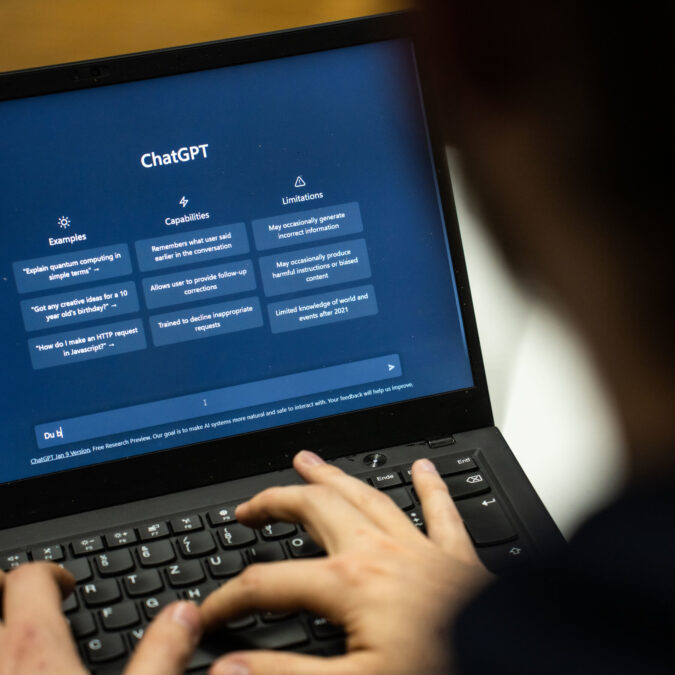Introduction
Imagine dedicating your life to a profession that fills you with passion and purpose, only to feel like you’ve been replaced by a machine. This is the story of a university lecturer who walked away from his academic career, not because he fell out of love with teaching, but because the rise of AI, particularly ChatGPT, made him question his role in the educational system. In this article, we dive into his journey, the struggles he faced, and what his life looks like after leaving a career he cherished.
The Evolution of AI in Education
AI in education has been a game-changer, making information more accessible and learning more personalized. But like any technological advancement, it comes with challenges.
A Brief Overview of AI Tools in Education
In recent years, AI tools have found their place in education. From adaptive learning platforms to automated grading systems, technology has reshaped classrooms and teaching styles. ChatGPT, a language model developed by OpenAI, emerged as one of the tools that promised to revolutionize education.
The Rise of ChatGPT and Similar AI Technologies
ChatGPT, in particular, gained popularity for its ability to generate human-like text responses. It can answer questions, explain complex concepts, and even engage in conversations. For students, this sounded like a dream come true—instant access to a tutor at their fingertips. But for some educators, it felt like their role was being diminished.
The Lecturer’s Background: A Passion for Teaching
To understand the impact of ChatGPT on this lecturer, it’s essential to know where he started and what teaching meant to him.
Early Years in the Academic World
Our lecturer, let’s call him Dr. Smith, had always been fascinated by the world of academia. He pursued higher education with vigor, earning a Ph.D. in Literature, and later became a full-time lecturer. The classroom was his playground—a space where he could ignite the flames of curiosity and knowledge in his students.
The Love for Engaging with Students
For Dr. Smith, the joy of teaching came from the connection with his students. He loved the debates, the “aha” moments when students finally grasped a difficult concept, and the deep conversations that stretched beyond the classroom. To him, teaching wasn’t just a job; it was a calling.
The Moment of Change: Discovering ChatGPT
Dr. Smith’s relationship with technology had always been positive. He used online platforms, integrated digital resources into his lectures, and was keen on staying updated. But when ChatGPT entered the picture, things started to feel different.
First Impressions of ChatGPT in Academia
At first, Dr. Smith was intrigued by ChatGPT. A few of his colleagues mentioned it as a tool to assist with repetitive tasks like grading or answering basic student queries. But soon, he noticed something unsettling—students were increasingly relying on ChatGPT to do their assignments, and classroom engagement started to drop.
Realizing the Impact on Traditional Teaching Methods
It didn’t take long for Dr. Smith to realize that the traditional methods of teaching were losing their relevance. Students could now bypass complex problem-solving and instead lean on AI to provide them with answers instantly. The classroom discussions that once thrived on original thought and debate were now diluted by AI-generated content.
The Struggles of Competing with AI
As ChatGPT became more integrated into the educational landscape, Dr. Smith felt like he was competing with a machine—and losing.
Feeling Replaced by Technology
It wasn’t just about AI offering information more quickly; it was about AI being perceived as more accurate and reliable. Dr. Smith started to question his value as an educator. If students could get instant answers from a bot, what was his purpose?
The Decline in Student Engagement
The once vibrant classroom atmosphere started to shift. Discussions became surface-level, and students were less inclined to engage in critical thinking. The spark that Dr. Smith had once seen in his students was fading, replaced by a passive dependence on AI.
The Decision to Quit: A Personal Conflict
Leaving teaching was not an easy decision for Dr. Smith. It was a long process filled with doubt, frustration, and reflection.
Why It Wasn’t an Easy Choice
Teaching had been his life’s work. The idea of walking away from something he had invested decades in felt like a betrayal to both himself and his students. However, he couldn’t shake the feeling that AI, specifically ChatGPT, had fundamentally changed the nature of education, and he wasn’t sure he fit into this new world.
Weighing the Pros and Cons
For months, Dr. Smith wrestled with the pros and cons. On the one hand, ChatGPT had undeniable benefits—it made education more accessible and personalized. On the other hand, it had eroded the personal touch of teaching, something he valued deeply. Eventually, he decided that stepping away was the best choice for his well-being.
What He Faced After Quitting
Life after teaching wasn’t as simple as he had hoped. Dr. Smith encountered several challenges, both emotionally and financially.
Identity Crisis: Who Am I Without Teaching?
Teaching had defined Dr. Smith for so long that leaving left him questioning his identity. Without a classroom and students to guide, he felt lost. Who was he if not a lecturer?
The Search for New Opportunities
The next challenge was figuring out what to do next. With AI continuing to dominate education, Dr. Smith explored other fields, but nothing gave him the same sense of purpose that teaching had.
Emotional and Financial Struggles
The transition wasn’t just emotional—it was financial too. Leaving a secure job meant adjusting to a new reality of financial uncertainty. He faced the anxiety of starting over while trying to process the emotional weight of leaving his passion behind.
Adapting to the New Reality
Over time, Dr. Smith began to accept that AI is here to stay and that education is evolving. But rather than seeing it as a defeat, he found new ways to adapt.
The Lecturer’s Thoughts on AI and Education Today
Now, looking at the bigger picture, Dr. Smith acknowledges that AI tools like ChatGPT have their place in education. While they may have diminished the traditional role of educators, they have also opened new doors for innovation and accessibility.
How He Found a New Path Outside of Teaching
Dr. Smith eventually found a new calling as a consultant, helping educational institutions integrate AI while maintaining a balance between technology and human connection. It’s not the same as teaching, but it allows him to contribute to education in a different way.
Conclusion: The Intersection of AI and Human Skills
Dr. Smith’s story highlights the inevitable tension between technology and human roles in education. AI, like ChatGPT, is powerful, but it can’t replace the human touch—at least, not yet. As educators navigate this new terrain, the challenge is to find a way to blend the best of both worlds.















